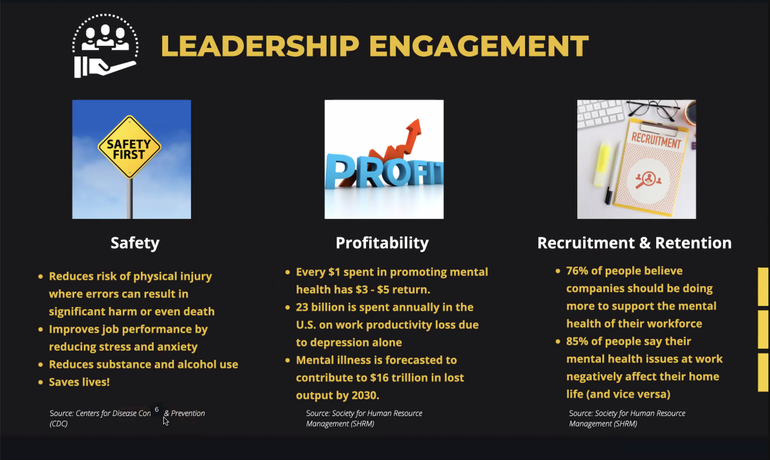How Company Culture Can Keep Roofers Safe
As a construction pro, you're well-versed in the latest OSHA regulations for job site safety. But is your roofing and exteriors company equipped to handle the "silent safety hazard" of mental health challenges in the workplace? Here's more from NRCA and Level Up Consultants' Mandy McIntyre on why a strong company culture can play a critical role in creating a safe workplace and what resources are available to help.

With Suicide Prevention Awareness Month recognized each September, it's important we take some time to discuss the prevalence and impact of mental health challenges both in the workplace and at home. The National Roofing Contractors Association got the ball rolling in August with a webinar led by Mandy McIntyre, owner and president of Level Up Consultants in Cleveland, Ohio. She is also a registered Mental Health First Aid instructor via the National Council for Mental Wellbeing.
Here's what McIntyre had to say about mental health, well-being in the workplace and what leaders and colleagues can do to support team members who may be experiencing mental health challenges.
What is mental health awareness?
Let's start with a definition of mental health. According to the U.S. Department of Health and Human Services, "Mental health includes our emotional, psychological and social well-being. It affects how we think, feel and act. It helps determine how we handle stress, relate to others and make choices."
Put more simply, mental health awareness is the recognition of what is going on with the health of the mind and "the ongoing effort to reduce the stigma around mental illness and mental conditions by sharing our personal experiences," according to BetterUp.

People who have mental health challenges, McIntyre noted, can still have good mental health. She also pointed out that stress is a relative term. "What may be deemed stressful to me might not be stressful to you at all, and vice versa," McIntyre said. "That does not make it less impactful to the person experiencing the stress."
On top of the normal daily stressors that come with home life, family life, work life and more, McIntyre continued, as a society, we have experienced more than two years of "collective and chronic stress due to the pandemic and political, societal and cultural unrest."
Why does mental health matter to roofers and roofing companies?
McIntyre called mental health challenges "the silent safety hazard" and noted that "one could argue that OSHA needs to adjust the Fatal 4 to the Fatal 5" to include mental health challenges.
She provided a variety of statistics (shown below) from the Centers for Disease Control and Prevention (CDC) and the Substance Abuse and Mental Health Services Administration, but all of them can be summarized powerfully into one statistic: "More construction workers die from suicide each year than every other workplace-related fatality combined."
With that sobering fact in mind, the question should be, "How can mental health not matter to those in the construction industry?"

What can roofers and company leaders do?
McIntyre said there are plenty of contributing factors of the construction workforce and company cultures that can play a role in this high level of mental health challenges seen in the industry, including stigma and fear, injury and pain management, relying on a transitory and seasonal workforce, facing high pressure on the job and more.
But there are actions leaders and employees can take to combat these challenges and to create a space where roofers can feel comfortable and safe to seek the help they may need. McIntyre suggested a four-tiered approach:
Leadership engagement: Create a top-down approach for a culture of support.
Awareness: Recognize mental health as a safety and wellness initiative.
Communication: Reduce the stigma.
Education: Get the proper training and resources.
Leaders, especially, can make a huge impact. The CDC and the Society for Human Resource Management note that leadership engagement in creating a culture with mental health awareness not only increases profitability and improves recruitment and retention but also reduces the risk of physical injury, improves job performance by reducing stress and anxiety, reduces substance and alcohol use, and—most importantly—saves lives.

If you or someone you know is struggling or in crisis, help is available. Call or text 988 or visit 988lifeline.org to reach the 988 Suicide & Crisis Lifeline.
Read more about:
DEIAbout the Author(s)
You May Also Like




